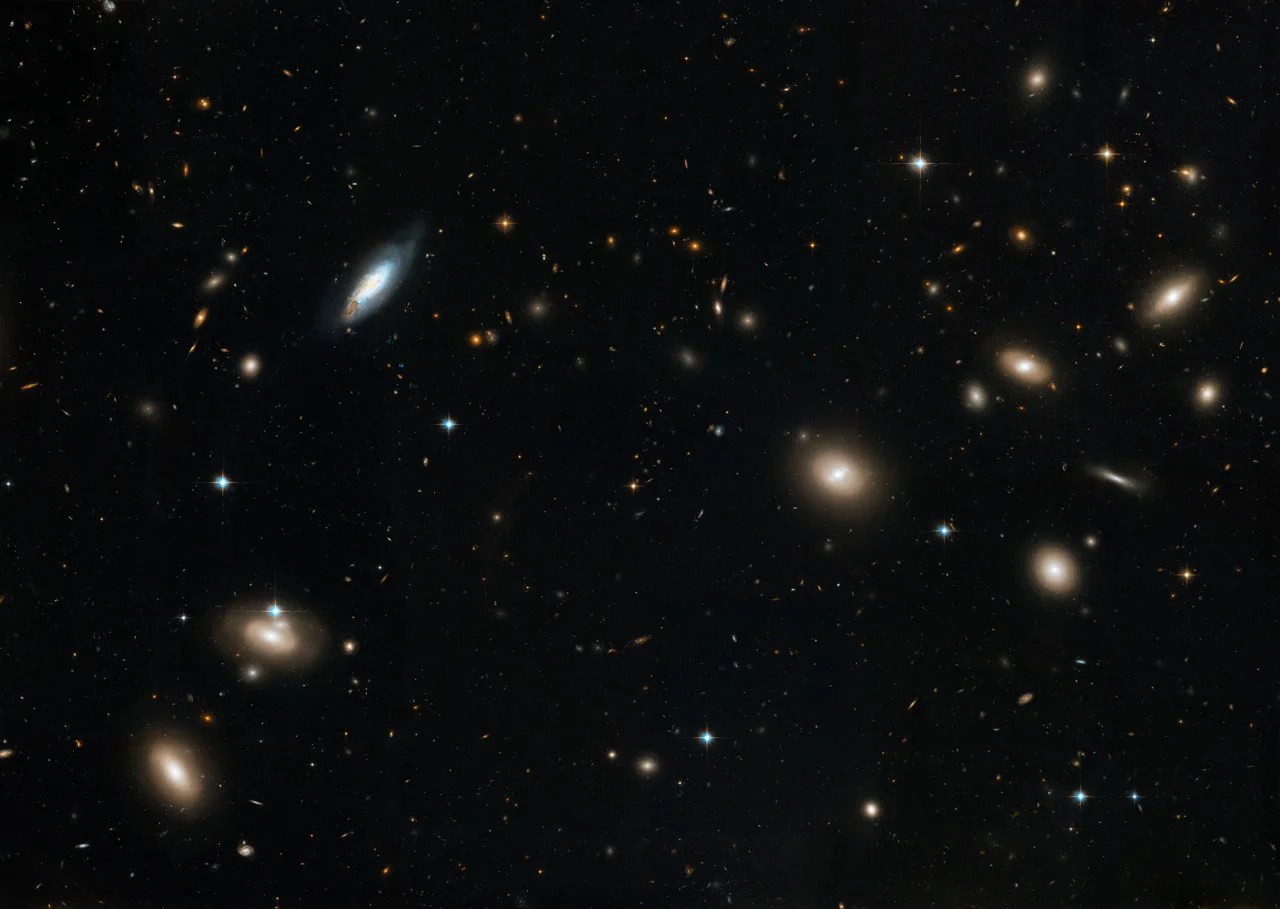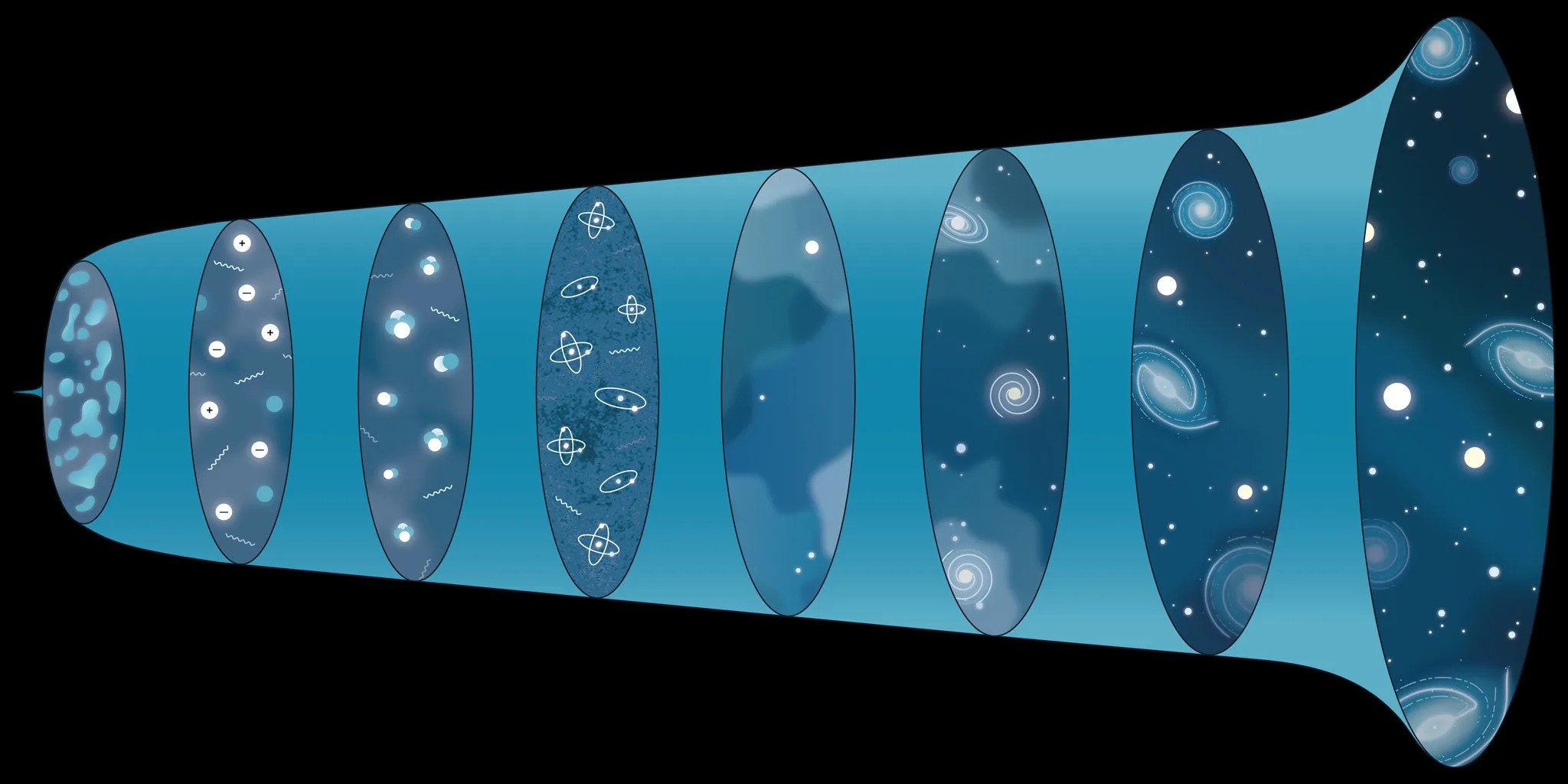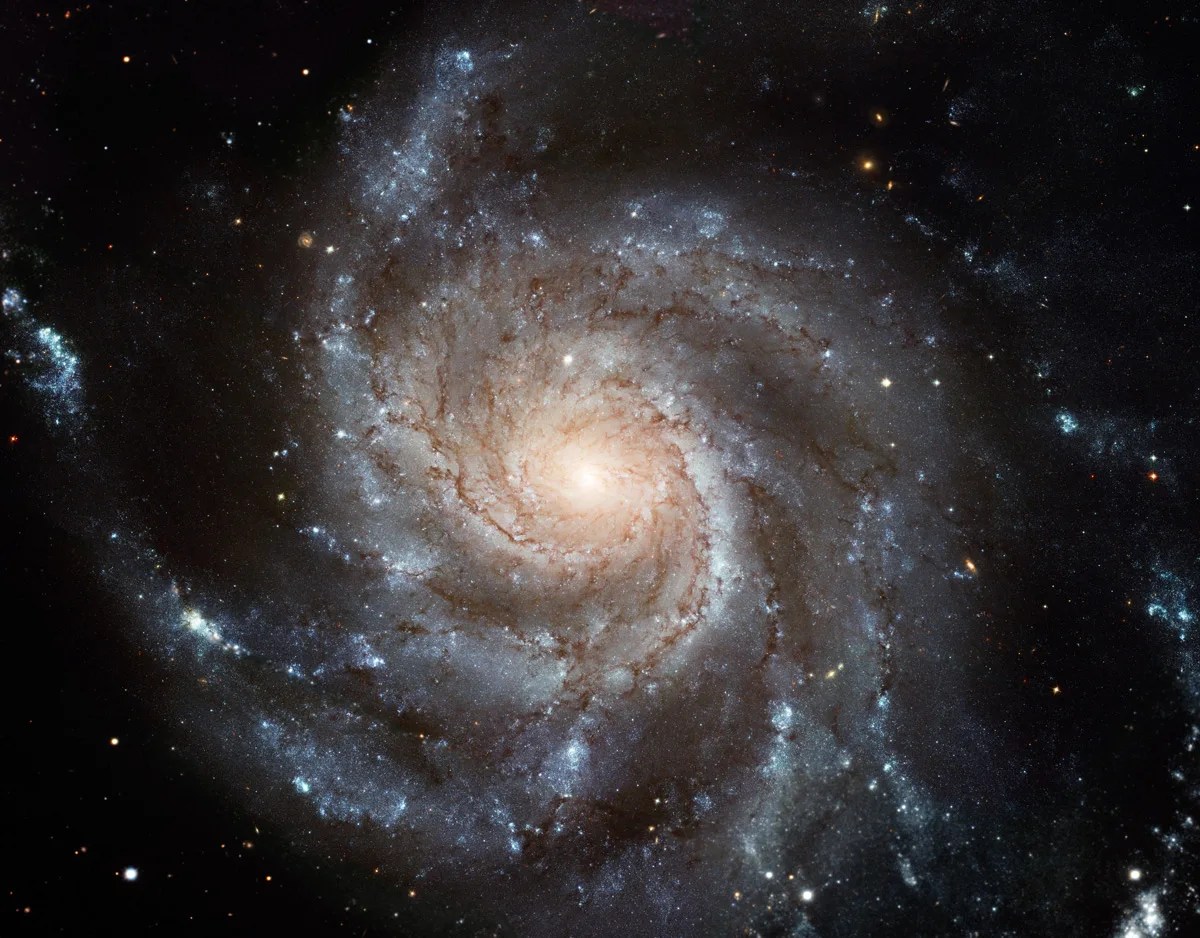2 min read
Just about every galaxy the size of our Milky Way (or bigger) has a supermassive black hole at its center. These objects are ginormous – hundreds of thousands to billions of times the mass of the Sun! Now, we know galaxies merge from time to time, so it follows that some of their black holes should combine too. But we haven’t seen a collision like that yet, and we don’t know exactly what it would look like.
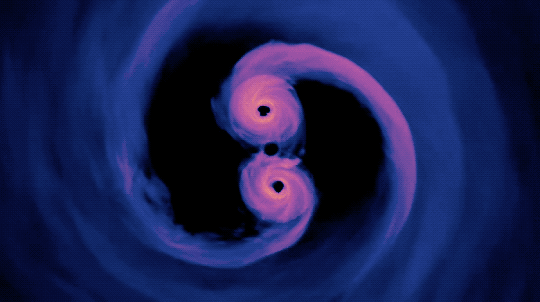
A simulation created on the Blue Waters supercomputer – which can do 13 quadrillion calculations per second, 3 million times faster than the average laptop – is helping scientists understand what kind of light would be produced by the gas around these systems as they spiral toward a merger.
NASA’s Goddard Space Flight Center
The simulation shows most of the light produced around these two black holes is UV or X-ray light. We can’t see those wavelengths with our own eyes, but many telescopes can. Models like this could tell the scientists what to look for.
You may have spotted the blank circular region between the two black holes. No, that’s not a third black hole. It’s a spot that wasn’t modeled in this version of the simulation. Future models will include the glowing gas passing between the black holes in that region, but researchers need more processing power. This version already required 46 days!
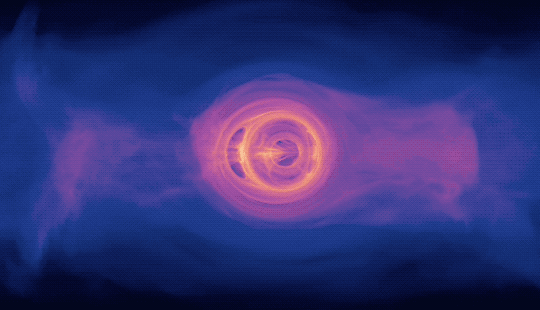
The supermassive black holes have some pretty nifty effects on the light created by the gas in the system. If you view the simulation from the side, you can see that their gravity bends light like a lens. When the black holes are lined up, you even get a double lens!
But what would the view be like from between two black holes? In the 360-degree video above, the system’s gas has been removed and the Gaia star catalog has been added to the background. If you watch the video in the YouTube app on your phone, you can move the screen around to explore this extreme vista. Learn more about the simulation here.




